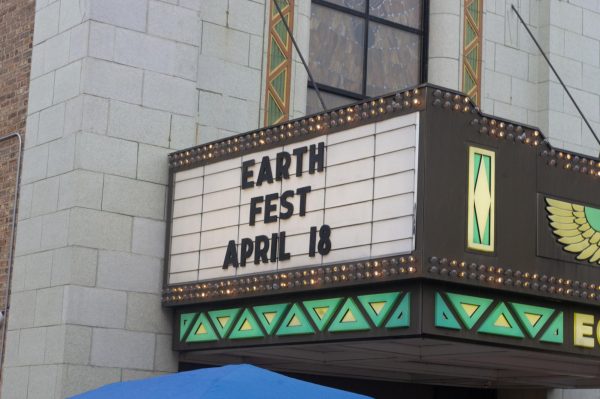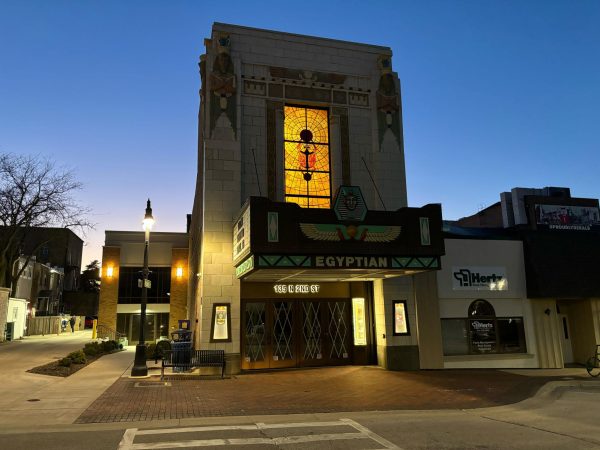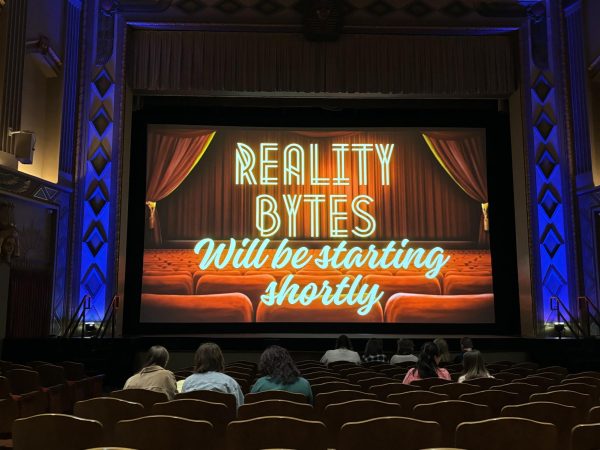“Sin City”
August 25, 2005
In the 1960s, comic book artist Jack Kirby added a distinctive cinematic element to comics, making the books look and feel more like movies.
Four decades later, the process has come full circle.
“Sin City” is based on a series of graphic novels by Frank Miller, who directs the movie alongside Robert Rodriguez (“Desperado,” “Once Upon a Time in Mexico”).
“Kill Bill” and “Pulp Fiction” helmer Quentin Tarantino also directs a small segment of the film.
The movie boasts an ensemble cast with the likes of Bruce Willis, Clive Owen, Elijah Wood, Michael Clarke Duncan, Jessica Alba, Mickey Rourke and many others.
“Sin City” is a dark pulp noir set in the bleak alleys of Basin City. The setting of Basin City is truly timeless: People shoot Uzis, drive old Coupes and talk on cell phones all in the same stride. The manner in which Basin City belongs to no particular era adds to Sin City’s surreal atmosphere.
“Sin City” offers three tales from Miller’s collection. “The Hard Goodbye” follows the endearing, delusional and unstoppable juggernaut Marv (Mickey Rourke) on his quest to avenge a slain woman. “The Big Fat Kill” finds the deadly romantic Dwight (Clive Owen) pursuing a madman (Benicio Del Toro) into the shady Old Town. Finally, “That Yellow Bastard” has a hard-boiled cop (Bruce Willis) protecting sexy stripper Nancy (Jessica Alba) from a menacing kidnapper (Nick Stahl).
Although shot in black and white, “Sin City” adds small dashes of color that not only excite the film but also add subtle links and foreshadows. One can see yellow in the irises of Rourke Jr.’s father, Senator Rourke. This small detail not only links Rourke to his son but serves to give Rourke a creepy predatory appearance. Looking into his eyes is like looking into the eyes of a hungry wolf.
Rodriguez and Tarantino provide an extremely creative and original interpretation of a scene that adds to Miller’s vision instead of blotting it out. Rodriguez and Tarantino stand shoulder to shoulder with Miller in this immersive achievement in both film and comic books.
Ultimately, “Sin City” is just as informed by pulp noir masters such as Chandler, Hammett and Spillane as comic book characters such as Batman, the Spirit and Frank Miller’s own masterpiece, Daredevil. By doing so, the work underscores a sense of fatalism with a greater theme of existentialism.
Everyone in Basin City is tainted with sin. Nancy is a stripper. Marv is a madman. Dwight is a murderer. But beyond that layer of dirt there is a defining element of humanity. It is a need, as Dwight puts it, “to prove to your friends that you’re worth a damn.”
By following this maxim, the people of “Sin City” make choices and take consequences one breath at a time before saying the hard goodbye.











